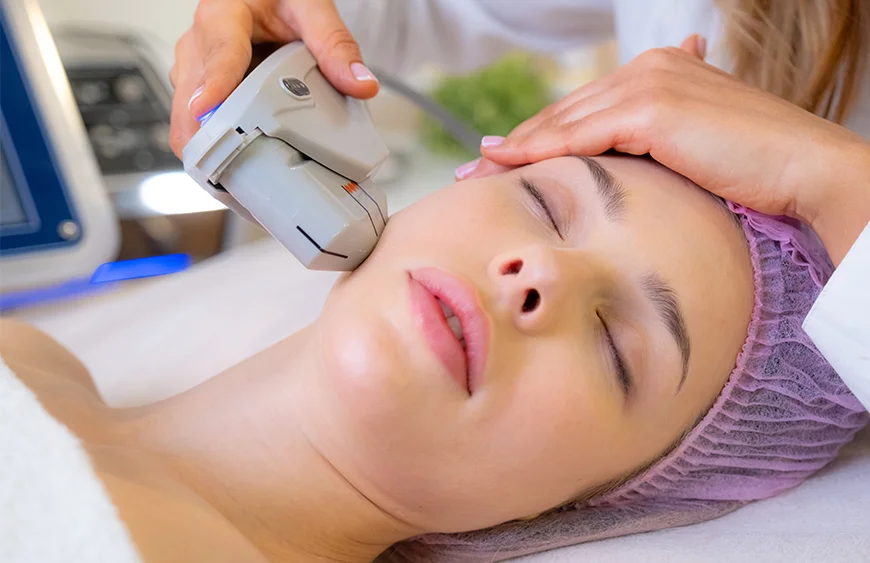High-Intensity Focused Ultrasound (HIFU) is a non-invasive cosmetic treatment designed to tighten the skin, reduce fine lines, and improve facial contours. It works by delivering focused ultrasound energy deep into the skin’s foundational layers, stimulating collagen production without damaging the surface. As the skin regenerates, it naturally becomes firmer, smoother, and more youthful in appearance.
This treatment has rapidly gained popularity for its ability to deliver visible lifting and rejuvenation without downtime or surgery. Particularly in regions like the UAE, Hifu Treatment In Dubai is now considered a go-to option for those seeking non-surgical facial enhancements.
What Does HIFU Do to the Skin?
HIFU targets the dermis and superficial muscular aponeurotic system (SMAS), the same layer addressed in traditional facelifts. The energy heats tissue to a temperature that triggers a natural regenerative response. This encourages the production of new collagen, which is the protein responsible for skin elasticity and firmness.
The result is a gradual lifting and tightening effect that becomes more noticeable throughout 2 to 3 months post-treatment. HIFU is particularly effective in treating sagging cheeks, jowls, forehead wrinkles, and a drooping neck.
Is There a Minimum Age for HIFU?
There is no strict minimum age requirement for HIFU, but it is generally not recommended for individuals under 25 unless there are specific aesthetic concerns or early signs of skin laxity due to genetics or significant weight loss. Most people considering HIFU fall into their late 20s to early 30s when they start noticing early signs of aging such as fine lines, reduced skin elasticity, or slight drooping of the skin. However, the ideal age varies based on skin condition rather than numerical age alone.
Ideal Age Group: 30s to 50s
The most suitable candidates for HIFU treatment are typically in their 30s to 50s. Here's why:
In Your 30s
In your early 30s, collagen production naturally starts to decline. Many people notice the first signs of aging such as faint crow’s feet, slight sagging around the jawline, and dullness in skin tone. HIFU can help delay these early signs of aging by boosting collagen and firming up mild laxity before it becomes more pronounced.
This is often considered a preventive age group, where individuals use HIFU to slow down the aging process rather than reverse significant changes.
In Your 40s
By the 40s, the skin shows more visible signs of aging — sagging, deepening lines, and volume loss. HIFU at this age can offer moderate lifting and toning, especially around the lower face and neck. It becomes a corrective measure rather than just a preventive one.
People in this age group often seek HIFU as a non-surgical alternative to facelifts or fillers, valuing its natural results and zero recovery time.
In Your 50s
For individuals in their 50s, skin elasticity is significantly reduced, and facial contours may be more profoundly affected. While HIFU can still offer visible improvements, the results may not be as dramatic as in younger age groups. It is best suited for those with mild to moderate skin laxity who prefer non-invasive treatments and are not ready for surgical intervention.
Can You Be Too Young or Too Old for HIFU?
Yes. If you are under 25, your skin likely still produces collagen in sufficient quantities. HIFU at this age may not provide significant benefits and is generally unnecessary unless there are exceptional circumstances like extreme weight loss or genetic skin laxity. For those over 60, the results may vary depending on skin health, lifestyle, and the degree of sagging. HIFU works best on skin that still has some elasticity. For extremely loose or thin skin, alternative treatments or surgical procedures may be more appropriate.
Is HIFU Right for You?
Regardless of age, the suitability of HIFU depends on:
- Degree of skin laxity
- Collagen levels
- Desired results
- Overall skin health
A professional assessment is essential to evaluate whether HIFU will meet your expectations. In many cases, combining HIFU with other non-invasive treatments such as microneedling or radiofrequency can yield enhanced outcomes.
Conclusion
While the ideal age for HIFU treatment is typically between 30 and 50, there’s no universal rule. The effectiveness of HIFU relies more on the condition of your skin, your collagen production, and your aesthetic goals rather than your exact age. Whether you're aiming to prevent signs of aging in your 30s or correct them in your 40s and 50s, HIFU offers a versatile, non-invasive solution that adapts to your needs.





Comments